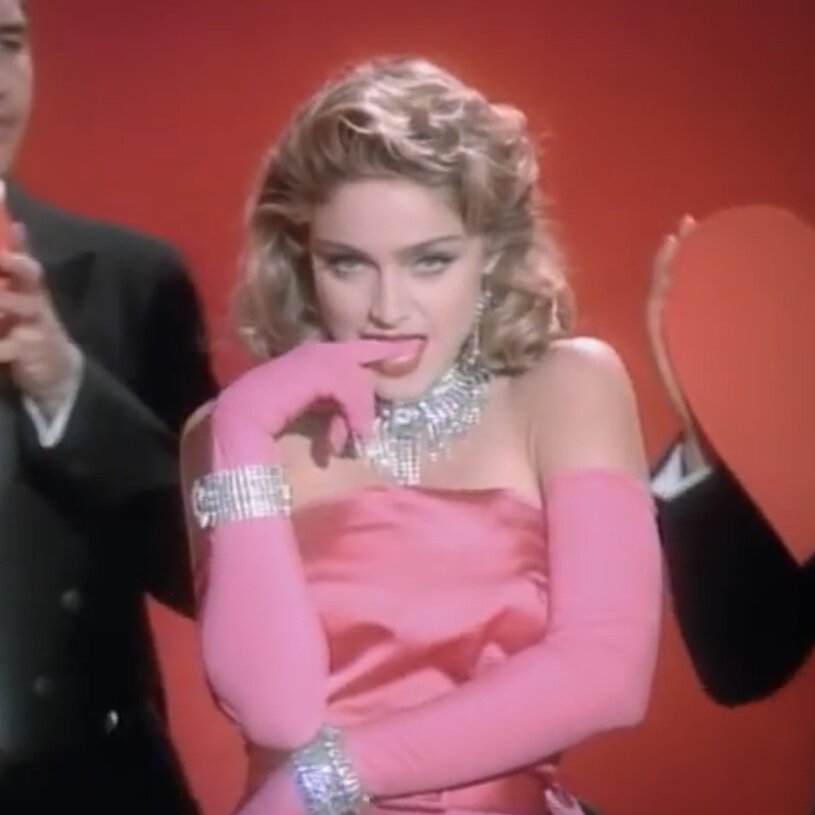Hi-Fi Sci-Fi: Five Favorite Daft Punk Moments
Formed in 1993, Daft Punk consists of the French duo, Thomas Bangalter and Guy-Manuel de Homem-Christo, who have continued to don dapper futuristic personas, shielding their faces from the public by wearing gleaming robot-inspired helmets. In one sense, this allows a focus toward the sci-fi sound of their music, while, in turn, it works as an inventive marketing strategy that balances professional familiarity with personal anonymity.
“Around the World,” from their 1997 debut album, Homework, celebrates the cyclical, from the song title itself (the track’s only lyrics on a synthesized loop) to its therefore mostly instrumental, intentionally repetitive retro-funk sound. Even its video embraced spherical visuals: dancers, assigned to designated riffs, beats and blips, moving on a concentric circular stage, plus there’s colorful backdrop of porthole lighting. Daft Punk made going around in circles more desirable than dizzying:
Four years later, they released, Discovery, which featured the fitting “One More Time”; “Harder, Better, Faster, Stronger,” which would later be heavily sampled by Kanye West on his 2007 track, “Stronger”; and “Digital Love.” Remember this commercial for the GAP, with the actress and singer, Juliette Lewis? (The jeans—and the video quality itself—are shall we say, vintage.)
From Madison Avenue to the movies: In 2010, they created the 24-track score for the film, Tron: Legacy, creating a mood to match the gloom-and-doom world that exists inside a cutthroat video game, with “Recognizer” starting out as intensely ominous, then suddenly becoming one of the most hauntingly beautiful tracks:
On 2013’s electro-disco, Random Access Memories, it was filled with inspired collaborations, most notably with Pharrell Williams and Chic’s Nile Rodgers on “Get Lucky” and “Lose Yourself to Dance.” In 2014, the album won the GRAMMY for Album of the Year:
And finally, their work on the 2016 album, Starboy by The Weeknd, in particular on the synth-R&B title track, and on the sexy, soulful bop of a ballad, “I Feel It Coming.” The bass riff that rolls in before the second verse is something for which to wait:
Will there be more good things from Daft Punk in the future, that sound like the future? I feel that coming too.
The Pop Zeal Project (Track 79): Madonna: “Material Girl”
Reference Material
Madonna’s “Material Girl,” from 1984’s Like a Virgin album, is one of the first instances of the singer’s love of playful irony. Vocals that evoke innocence tell the story of a seemingly passive individual who is savvier and more decisive than one would believe. While it appears she is the pursuer of material goods held by “some boys,” by song’s end, she becomes the pursued; there’s a reversal of roles, as heard in the following not-so-veiled verse, full of layered meaning: “Boys may come and boys may go/And that’s all right you see/Experience has made me rich/And now they’re after me.”
Mary Lambert’s video for the song also established just how ironic Madonna felt the song was. Its homage to Howard Hawks’ 1953 Gentlemen Prefer Blondes features Madonna as an actress on a film set, playing the role Marilyn Monroe made famous, a role that had Monroe singing, “Diamonds are a Girl’s Best Friend.” Yet in this interpretation, both Madonna as the actress and—judging by the “Like a Virgin” lace outfit at the end of the video—Madonna herself believe that daisies can also be a girl’s best friend. Madonna dances a fine line: she pays respect to the film reference, while simultaneously offering critical opposition to “Diamonds” antiquated philosophy.
